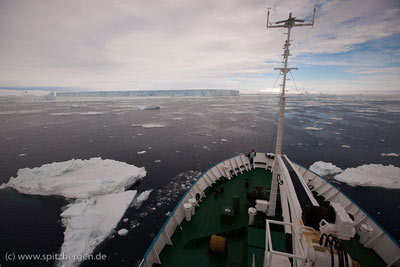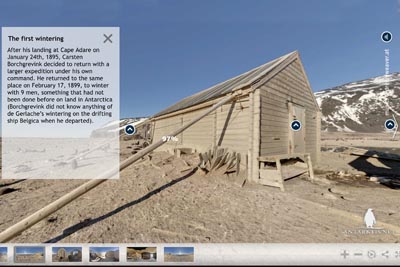Seitenstruktur
-
Spitsbergen-News
- Select Month
- March 2020
- February 2020
- March 2019
- January 2019
- December 2018
- September 2018
- June 2018
- May 2018
- April 2018
- March 2018
- February 2018
- January 2018
- December 2017
- November 2017
- October 2017
- September 2017
- June 2017
- May 2017
- April 2017
- March 2017
- February 2017
- January 2017
- December 2016
- September 2015
- April 2015
- March 2015
- February 2015
- January 2015
- December 2014
- October 2014
- August 2014
- June 2014
- May 2014
- April 2014
- March 2014
- November 2009
- April 2000
- Select Month

| Grytviken |
Home →
Yearly Archives: 2015 −
Southern Ocean is regaining strength as a CO₂ sink
Since 2002 the Sothern Ocean takes up an increasing amount of the greenhouse gas CO₂ from the atmosphere. This is the result of two studies recently published in the journals Science and Geophysical Research Letters.
The oceans are known as an important CO₂ sink. It is suggested that until now they removed 25% of the human made amount of CO₂ from the atmosphere, meaning a significant contribution in slowing climate change. The Southern Ocean (here: below the 35th parallel south) is particularly productive in this case. Although it covers only 26% of the oceanic surface it contributes approximately 40% to the ocean´s CO₂ sink. In the 1990s studies had suggested that this absorbing capacity of the sea around Antarctica was weakening. A positive feedback effect was discussed: That it was global warming itself which provoked this weakening and thereby contributed to its own acceleration.
Now, by analyzing long-term data from atmosphere and surface water of the Southern Ocean, the new, recently published studies show that the Antarctic Sea began to strengthen its CO₂ absorbing capacity again in 2002 and continued to do so until at least 2012. The reasons for this change are still not clear. There is one suggestion, that in winter an increasing amount of deepwater is getting to the surface; water that didn´t have contact to the atmosphere for several hundreds of years. If the new strengthening of the oceans CO₂ sink is again provoked by global warming, cannot be negated. In this case at least the effect would be a welcome one.
The Southern Ocean, an important CO₂ sink-Senke
Source: American Geophysical Union, Science
Antarctic panorama: Cape Adare
There is a new panorama tour (virtual tour) from Antarctica, namely from Cape Adare in the Ross Sea. Cape Adare is one of the most famous, but rarely visited places in Antarctica: in 1895, it was the site of the first well-documented landing on the continent, and in 1899 it was the site of the very first wintering on the continent, by an expedition led by Karsten Borchgrevink. These stories are shortly summarized in the new panorama tour, and so is the visit of the northern party under Campbell during Robert F. Scott’s final expedition with Terra Nova.
The panorama tour documents the historic huts at Cape Adare and gives impressions of the amazing scenery of the place at the northernmost end of Victoria Land, being part of the famous Transantarctic Mountains. Cape Adare is also home to the largest colony of Adélie penguins in Antarctica, which means in the world.
In early February, I was lucky to spend a rare good weather day at Cape Adare. On this occasion, I shot the panoramas which are now assembled to this new panorama / virtual tour (click here to get to the tour). Enjoy a virtual trip to Cape Adare!
Virtual tour of Cape Adare, site of the first landing and wintering in Antarctica and home to the largest colony of Adélie penguins.
South Georgia: third phase of Habitat Restoration Project completed
The third and last main working phase of the Habitat Restoration Project on South Georgia has been completed successfully. The Habitat Restoration Project of the South Georgia Heritage Trust (SGHT) is the immense task to remove rats from the island that have been introduced by sealers and whaler, see also previous news on this website. The aim is to restore South Georgia as a breeding habitat for millions of seabirds, especially smaller species.
Some days ago, the SGHT was able to release an important press stop: the third, final main phase of the project has been completed with success! On Monday, March 23rd 2015, the last load of bait was dropped from one of the helicopters of Team Rat.
It will, however, take several years until final success can be declared: all areas need to be carefully checked to make sure no rats have survived. The survival of only 2 rats, male and female, or even one pregnant female, would sweep off all efforts as rats populations can pick up very quickly, making it impossible to control them on a low level. Currently, areas from earlier working phases are being checked. This work will continue for several years to come. At the time being, Team Rat is still in South Georgia and able to do more baiting should any need arise.
The SGHT and their supporters have done an immense work with great success, achieving what many would have described as the impossible. In the interest of millions of seabirds, we wish the Habitat Restoration Project of the SGHT the very best and we hope that we can celebrate the final success of the project after all checks have been completed within a few years.
The SGHT is happy to receive donations to support their ongoing work for the project.
Seabirds near South Georgia: thanks to the Habitat Restoration Project, populations especially of smaller species can be expected to increase significantly in years to come.
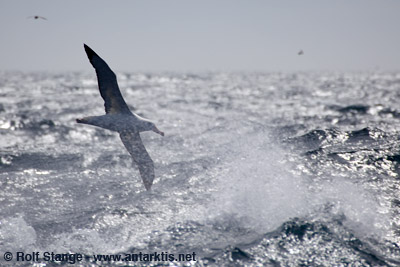
Source: South Georgia Heritage Trust
South Georgia rat eradication is making progress
The Habitat Restoration Project of the South Georgia Heritage Trust (SGHT) is the highly ambitions project to eradicate rats completely on South Georgia. The island has been rat infested since the Brown rat was incidentally introduced by sealers and whalers, since then these rodents have spread over most parts of the island: a disaster for millions of smaller seabirds which are breeding there in the high tussock grass or in burrows, and their populations have been decimated drastically.
After rats and other introduced species had been sucessfully eradicated on other, though smaller, subantarctic islands such as Campbell Island and Macquarie Island (both south of New Zealand), the SGHT decided to attempt the seemingly impossible and get rid of rats on South Georgia, which is, however, much larger and has a much more difficult, largely alpine, terrain. But the glaciers help to make it possible, as they are impassable barriers for rats, separating the large island into a number of smaller areas which can be treated separately. But not forever, as glaciers are retreating rapidly on South Georgia, and it won’t take long until some have retreated far enough to expose beaches where rats can then move freely from one area to another. Then, the areas will be too large for a successful eradication. The consequence is simple: now or never!
The procedure to drop poisoned bait from helicopters is sophisticated, but generally well known from previous projects such as Campbell and Macquarie Islands. The teams involved there have now brought their knowledge and experience to South Georgia. Certain techniques, bait and good timing limit the number of other birds being poisoned by accident to a minimum. There is some mortality amongst species like Giant petrels and Skuas, but numbers are low and far from a level that might endanger populations.
A first testing phase in a smaller area was successful, and so was the first of the two main phases of the project in a larger part of South Georgia. Several helicopters are used to drop large volumes of bait during a strictly defined, very sophisticated flight pattern in short time periods when weather allows flying. Weather conditions during the first main phase were very challenging, but “team rat” managed to complete their task successfully after initially having been driven to near despair when strong winds and poor visibility kept the helicopters on ground for quite some time.
The project is scheduled to be completed in 2015. So, currently rats are still roaming on large parts of South Georgia, and many more flight hours are required to bring the work to a good end. Control of the rat population on a low level is not possible, it is either success in terms of an absolutely complete eradication or a total failure, nothing in between. In case only one pregnant female survives, the population would increase again very quickly and the effort would have been in vane. This means that the completion of the project cannot be postponed for a long time, also considering the rapid glacier retreat. First sightings of breeding South Georgia pipits in areas where they had not been breeding for decades is amongst the evidence for the success that has already been achieved, showing it is worth every effort to give the island back to millions of seabirds that had been breeding there for thousands of years until the sealers and whalers brought the rats.
Success will now depend on weather and, as too often in life, money: the immense logistics needed to move the team, equipment, bait and helicopters to South Georgia, where no helicopters are available, require large-scale funding in the order of millions. The South Georgia Heritage Trust appreciates every donation ( click here for more information on this ).
It is also possible to buy items which are nice to have and nice as presents to support the project, such as James McQuilken’s book The Mists of Time, the moving life story of Cymba, a Wandering albatross. The present author has translated this book into German as Die Nebel der Zeit to support the project. In 2014, sales of Die Nebel der Zeit raised money to support the work of the habitat restoration project on 2 hectares of South Georgia. Far from enough, but every contribution makes a difference!
In 2014 the book Die Nebel der Zeit financed the habitat restoration project on 2 hectares of South Georgia.
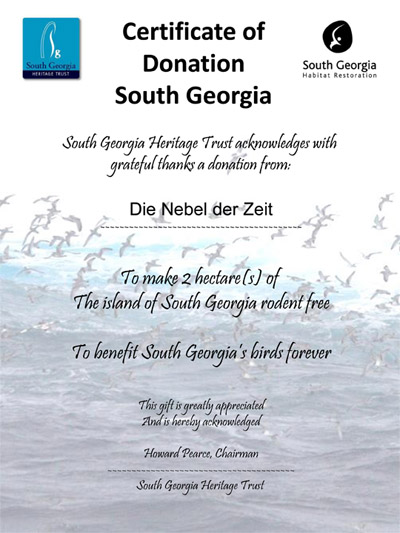
South Georgia pipit nest in Schlieper Bay. There and in other, large parts of South Georgia, they had not been able to breed for decades.
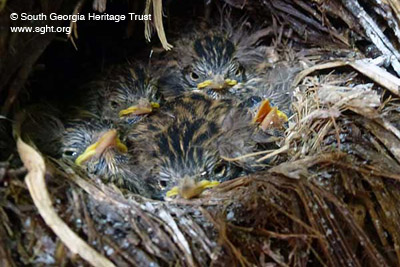
Source: South Georgia Heritage Trust
Scott’s hut at Cape Evans (Terra Nova expedition): virtual tour
Photo galleries and triplog of the Ross Sea voyage with MV Ortelius in January-Februar 2015 are already online. Now, the first of several panorama series that have been taken during this trip is published. At Cape Evans, I had the rare opportunity to take panorama photos inside Scott’s hut from his last expedition with Terra Nova (1910-1913) and of the surrounding landscape. The results can now be seen on this website (click here). 10 panoramas, 8 from inside the Terra Nova hut and 2 landscape panoramas of Cape Evans, can be viewed both individually and as a virtual tour, taking the visitor online through all corners of the hut and around at Cape Evans, where you can see Mount Erebus, McMurdo Sound frozen between Cape Evans and Hut Point further south, with islands including Razorback Island and Inaccessible Island that are known to those who have read Scott’s diaries that were published as Scott’s last expedition. Short commentary comes along with the individual panoramas. Most of them are inside the hut, showing all parts of the famous base from which Scott went to the South Pole. It is well known that he and his 4 comrades died on the way back.
Screenshot of the virtual tour through Scott’s hut at Cape Evans.

New Zealand
Tue
10 Feb
2015
09th-10th February 2015 – The journey came to an end a week ago, but we have to have a final blog entry. We can’t just leave good Ortelius somewhere near Campbell Island.

On 09th February, the gently rolling hills of Stewart Island came into view, on the horizon first, then slowly coming closer, to everybodies delight. That was obviously a signal for the Albatrosses to say goodbye to us during that day. By the way, White-capped albatrosses had been amongst our faithful attendants for sometime. Admittedly, I had initially believed they were juvenile Campbell albatrosses. But now, they are fully grown, beautiful representatives of a species that I had never seen before, or more likely, that I had not knowingly seen before. Splendid!
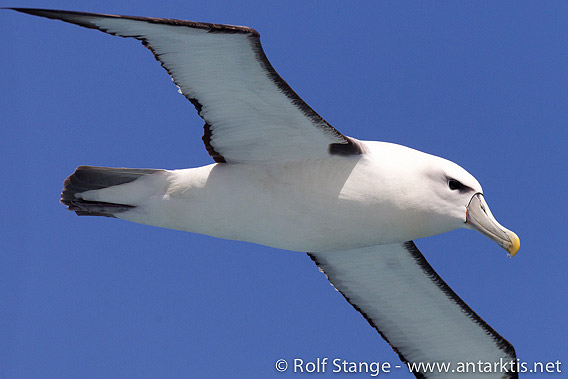
The end of a big journey is usually rather profane. Passports need to be stamped (took surprisingly long), luggage to be moved from ship to shore (went rather quickly), hands are shaken (not enough time) and then a seemingly endless number of food items is carried down into the ship (took far too much time). Then, relaxed moments in a café, claiming to be the most southern outpost of its globally known owner company, in Invercargill (a one-horse town … sorry, did not want to offend anyone) and in a pub in Bluff (compared to which, Invercargill is a metropolis) with my good fellow colleagues. A day later, the beginning of a long series of 6 flights half way around the planet.
Meanwhile, Ortelius is on her way again, now already well on her way back into the Ross Sea. On the way south, Campbell Island was far more friendly than a few days before, when we were there on our way north, as far as I have heard. Well, good luck to the ship and all on board, have a safe, great journey into the Ross Sea and beyond!

That’s it with my antarctic blog for the moment. Not too long before I will continue in the arctic. But before we get that far, have a look at the triplog and the comprehensive photo galleries from this Ross Sea voyage, the antarctic odyssey, semi-circumnavigation. Advanced Antarctica. And during the weeks to come, I will obviously update the antarctic panorama collection on this website. I started the polar panorama photo pilgrimage 2 years ago in the Ross Sea. Looking back, I think I have used these 2 years for good benefit. It will be well worthwhile to have a look at the Ross Sea panoramas photos soon. So have a look. After the trip is before the trip.
Thank you for reading this far!
Rolf
Sea of Albatrosses and wind
Sun
8 Feb
2015
In case the headline reminds you of the previous blog entry, there is a reason for that. It is just how the area is. Our early morning attempts to land on Campbell Island were doomed by winds of 40-50 knots, it was not even possible to keep the ship longer in Perseverance Harbour than just a few moments, let alone drop anchor or even zodiacs. The bay provides shelter from the westerly swell, but channels the wind, making it even stronger than it is outside.
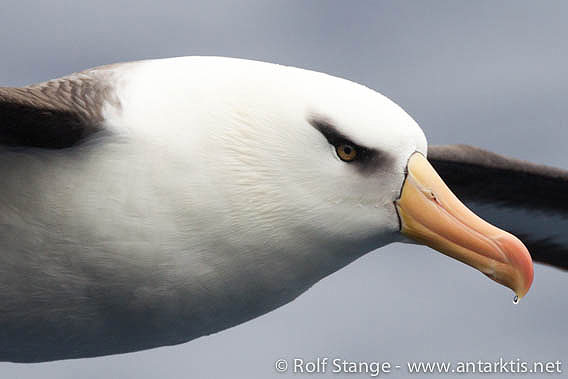
Considering near windy 30 hours spent off Campbell Island, time running out and a forecast not giving much reason to be optimistic, there is not much choice but taking off, back to the high seas, and setting course for Bluff, our next and last stop, in New Zealand. Campbell Island was not meant to be, or, as a fellow traveller put it so nicely: it is the privilege of an island to say ‘no’.
The following day at sea was a bit of a roller-coaster ride. Rocks on the road. But those who live here don’t use cars or bicycles, and they don’t walk. Nature has equipped them with the most elegant and efficient wings and they glide without effort sharply over waves that keep some of us from enjoying their breakfast. More than a dozen Royal albatrosses keep circling around the ship, approaching every couple of minutes to the delight of those who stay outside as if they were glued to the deck. Regularly, eyes and cameras go up, when the large royals of the winds and their smaller relatives (subjects?) come near, as little lunar objects around our little planet, the ship Ortelius, seemingly following Kepler’s laws.

For a few precious moments, we even have the pleasure to enjoy this with the golden sun disappearing behind some low clouds in the evening.
The island of wind and Albatrosses
Sat
7 Feb
2015
The Southern Ocean – that sounds like some warm, quiet islands with beaches and palm trees. But that is the roaring forties, the furious fifties and the screaming sixties. They keep living up to their bad reputation today. That is quite a spectacle in itself, and of course there was no serious thought about any zodiac cruising along Campbell Island’s wild cliff coasts, searching for Yellow eyed and Eastern Rockhopper penguins, various Albatrosses, Sea lions and so on, not to mention going ashore. Well, if we can’t get to them, maybe they will come to us. And they do! Dozens of Albatrosses around the ship, and some patience is rewarded by sightings of Yellow-eyed penguins plunging in the water near the ship. Brief sightings, but … sightings! The odd Sea lion jumping out of the waves. Have I ever seen this many Great Albatrosses in one place? I am quite sure I haven’t. Southern Royals, all of them, as far as I can tell. And all the smaller o nes, Campbell albatross, plenty of Light-mantled sooties … the whole lot.
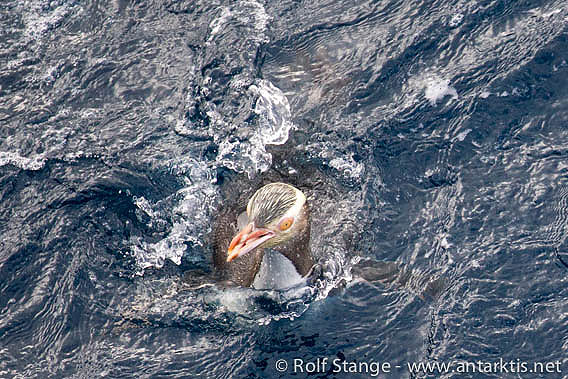
The windmeter is almost equally interesting. A steady 40-50 knots for a start, and then the gusts. The strongest one I have seen was 84 knots, that is a good 150 km/h. Wind force 12 on the Beaufort scale starts at 64 knots. Force 12 is the last once, called hurricane. 84 knots.
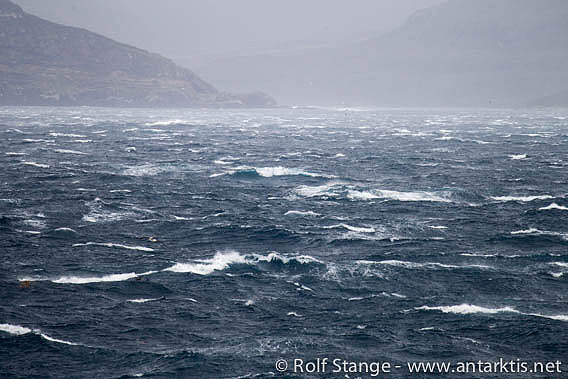
Fingers crossed for tomorrow morning. If it is getting a bit (a good bit, that is) calmer, then we’ll go ashore on Campbell Island shortly after sunrise. That would, of course, be the icing on the cake.

Albatross latitudes
Thu
5 Feb
2015
04th-5th February 2015 – It was clear that the nice weather was not going to last forever. We still can’t complain. We have got southerly to southwesterly winds, so it does not slow us down too much. Time is key. But now we do feel that we are actually on a ship. Some are enthusiastic for the wild ocean and the big waves, others less so.

If you put on some warm clothes and spend some time outside – the aft deck on level 4 is decidedly the best place to watch and photograph birds, that is where the community meets – you will get a lot. We are back to the Albatros latitudes, the furious fifties, which are now living up to their good reputation. Buller’s albatros, Wandering albatros, Southern royal albatros, Campbell albatros, Light-mantled sooty albatros, did I forget one? And of course, all the prions, the ever-present Cape petrels, Soft-plumaged petrel, Mottled petrel, shearwaters … there is a lot around. Lucky who gets a sharp photo of a prion.
At sea
Tue
3 Feb
2015
02nd-03rd February 2015 – We need one day to get through the pack ice north of Cape Adare, which turns out to be fairly unproblematic. Compare it to the 43 days that the Antarctic needed in 1895 to get through to Cape Adare, coming from the north … I know, it is not fair to compare the Antarctic in 1895 and the Ortelius 120 years later. Captain Kristensen had no ice chart, no steel hull and no 3200 kW in his engine room. But it is good to keep those 43 in mind to understand the environment we are in.

The weather Gods are in good mood. It is calm and sunny, a real cruise across the Southern Ocean, we are standing on deck, holding a cup of hot chocolate, camera hanging over the shoulder. Life isn’t too bad like this. See how long it will last.
Cape Adare
Sun
1 Feb
2015
Cape Adare is the point where the Ross Sea coast becomes the coast of East Antarctica. A high rocky peninsula sticking out into the Southern Ocean. You will expect that such an obstacle will catch any winds, clouds and drift ice fields in the area, and there is a lot of all of this.
Accordingly, you have to be ready for everything when you are getting near Cape Adare. Hope the best, be prepared for the worst, this has always been the way of thinking for polar travellers, at least those who knew something about the environment they were about to visit, and this has not changed until today.
Admittedly, I had nevertheless high hopes for a successful landing at Cape Adare when it became visible on the horizon. One of the big, historically well-known placenames in Antarctica, the geographical guard watching over this entry into the Ross Sea, discovered January 11, 1841, and even this old reptile, one of the finest mariners of his times, did not get ashore: „ … the wind being on the shore, and a high sea beating heavily along the pack edge, we found it quite impracticable.“ But he did certainly like the scenery: „It is a remarkable projection of high, dark, probably volcanic, cliffs, and forms a strong contrast to the rest of the snow-covered coast. … It was a beautifully clear evening, and we had a most enchanting view of the two magnificent ranges of mountains, whose lofty peaks, perfectly covered with eternal snow, rose to elevations varying from seven to ten thousand feet above the level of the ocean. The glaciers that filled their intervening valleys, and which descended from near the mountain summits, projected in many places several miles into the sea, and terminated in lofty perpendicular cliffs. In a few places the rocks broke through their icy covering, by which alone we could be assured that land formed the nucleus of this, to appearance, enormous iceberg.“

How incredible it was for us when even the morning’s gentle breeze calmed down while we were approaching the famous headland – under a brilliantly blue sky. None of those few whom I know and who have been there will ever believe that. Just a dense belt of drift ice between Ortelius and the dark cliffs, so we’ll get the helicopters out. If good old Ross had seen that!
The shore of Cape Adare consists of inaccessible steep cliffs, and the actual landing site is a little, flat peninsula on its western side. A triangle of dark gravel, of volcanic origin and piled up to a series of beach ridges by the everlasting surf, with some small, long lagoons between them. The white-blue icebergs and densely packed ice floes, all swimming in darkblue, calm water, are a view of unearthly beauty from the air, from where we could also already see the immense number of penguins crowding most parts of the peninsula. Ridley Beach, as it is called, is home to one of Antarctica’s largest colonies of Adélie penguins, if not the largest one. 250,000 breeding pairs are mentioned in the literature, good for well beyond half a million individuals. Considering this, we are soon finding surprisingly large areas with few or no nests at all, maybe there is too much snow there in the beginning of the breeding season. On the other hand, many o f the Adélies are climbing up high onto the adjacent cliffs, reaching up to 300 m with their nesting sites. First class views, but the weather protection leaves a bit to be desired, and I don’t even want to imagine the struggle they have to go through to provide their chicks with every single meal.
People develope weird habits when there are too many of them in little space, and so do penguins. In 1911, when of Scott’s biologists spend a while at Cape Adare, making some remarkable observations. His paper about the „sexual habits of the Adélie penguin“ was deemed too bizarre for publication. It has been dug out again a century later, believed to be accurate and published only in 2012 in Polar Record. An interesting read.

Not only wildlife is teeming at Cape Adare, people have also lived here once for a year. This was Carsten Borchgrevink’s wintering in 1899, crowded together with 10 men in a far too small hut with far too little to keep them busy, leaving far too much time to make life hell for each other. But they were the first ones ever who wintered on the continent of Antarctica. The hut is still there, it is the very oldest one in Antarctica, an icon of polar history, and the only building on this planet that can claim to be the very first one on its continent ever.
Hundred thousands of penguins and other assorted wildlife, antarctic scenery on the highest level, the oldest hut of the continent – it is safe to assume spirits were high as we returned back to the ship after a long afternoon out there. The welcome greeting by our great hotel team is icecream and hot wine on the top deck to celebrate the day. Ice in your hand, ice around the ship, ice everywhere shining under a still bright evening sun. It is our last day near the antarctic coast. Once again, Antarctica has shown us how beautiful she can be, and pulled on all strings to do so.

Terra Nova Bay, Cape Hallet
Sat
31 Jan
2015
A bay and a cape in the headline – Terra Nova Bay, Cape Hallet – both on the coast of Victoria Land in the western Ross Sea, that indicates a wealth of overwhelming impressions. Some of the Ross Sea’s great iceberg alleys, huge glacier tongues, penguins and orcas almost guaranteed, possibly a landing, maybe on Inexpressible Island, where Scott’s northern party was forced to winter under very difficult circumstances. Zodiac cruises, helicopter flights. Under the midnight sun, before breakfast, from early morning to late evening.
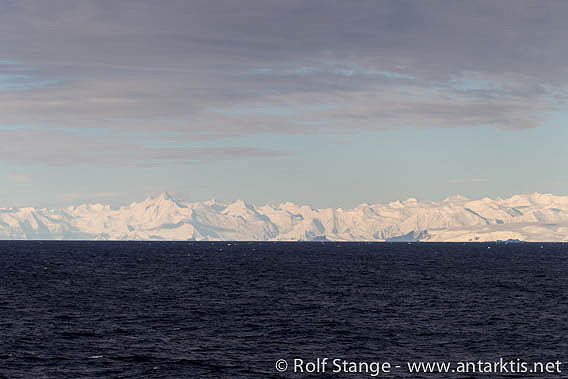
Well, it turned out to be a very relaxed day. As it turned out, the coast was everywhere blocked by dense belts of ice. Many miles of old, tough floes. So we stayed far off the coast, felt like at high seas, with low clouds and stiff wind. Well, the Ross Sea is no lake. On the other hand, there is nothing wrong about relaxing a bit, after the long days we have just had. And Cape Adare is still ahead of us. Fingers crossed.
Cape Royds
Fri
30 Jan
2015
We made another attempt last night to zodiac-land at Cape Royds, just to find out that Backdoor Bay was still as much filled with brash ice as the day before. So today was to be the day. We gave it an early morning start, dragged the helicopters out and soon the air bus shuttle service was in operation.
Cape Royds is at the foot of Mount Erebus, a very volcanic landscape with some peculiar erratic boulders of granite. A beautiful, if not slightly dark scenery, which can be very grim at times of bad weather, but just grand on a sunny day like this, and again Mount Erebus is looming clear from any clouds above the site of our excursion. Which is very appropriate, as it is from here it was climbed for the first time ever, during the expedition we want to pay hommage to now.
The Nimrod-expedition (1907-09) was the first one Shackleton was in charge of himself and certainly his most successful one ever. He almost reached the South Pole. Within less than a hundred miles from it he saw himself forced to give up and turn around, „better a living donkey than a dead lion.“ As mentioned, Erebus was climbed for the first time during the expedition and the south magnetic pole was reached, something James Clark Ross could only dream of in 1841.
The hut is smaller and less complex than Scott’s at Cape Evans. Tins are still standing on the shelves. All men shared one room, only the Boss had a little cubicle to himself, which he willingly gave to other expedition members who needed time for recovery. You can even find Shackleton’s signature on a wooden board.
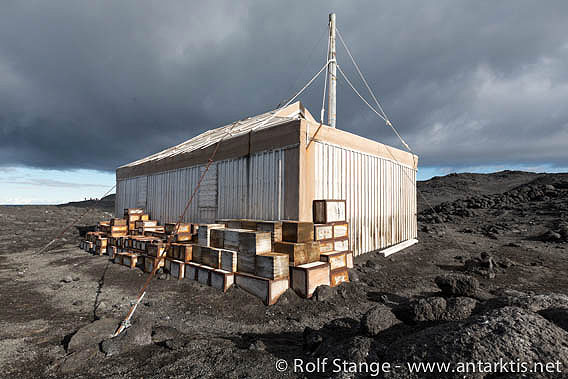
Adelie penguins are breeding a few hundred metres away from the Nimrod hut, they say it is the southernmost one anywhere. Maybe there are some more nesting at Cape Barne, a good stone throw further south, I don’t know.
Our little pre-breakfast excursion is indeed short enough so we, the guides, just make it back in time for lunch. It always takes a while in the end, as the very last helicopter can only land on the ship once the other one has been shut down, folded together and stowed away. Helicopter logistics are always quite an operation. But it was worth every minute. Even our penguin specialist colleague, not a polar history lunatic or a Shackleton groupie, agrees. Cape Royds would be worth a visit even without the historical hut.

After an early start and a long morning out, it is a quiet afternoon on board as we are sailing northwards, leaving McMurdo Sound behind. The few precious days there are over for this time, as always too short, but spoiled with amazingly good weather. Mile after mile through calm, open water, with great views of Ross Island with all 3 major peaks at the same time: Mount Terror, Mount Bird and Mount Erebus, this famous trio of glacier-covered volcanoes. How often can you see them so beautifully?
Dry Valleys: Taylor Valley
Thu
29 Jan
2015
No, we have not just slept through the 28th. It did not exist. The date line.
The weather just can’t get better than it is today. That is the opportunity for our longst helicopter operation, the flight into the Dry Valleys, namely Taylor Valley. The Ortelius is in New Harbour, on the western side of McMurdo Sound, pushing its bow firmly against the edge of mile of fast ice separating us from the real coast. Ahead of us we have got the Transantarctic Mountains, this immense mountain chain with countless wild peaks stretching hundreds and hundreds of miles from Cape Adare to well beyond 80 degrees south. And in the middle of it, these weird valleys which are too dry even for the glaciers.
It is a lot of work today for the pilots to fly almost 100 people from Ortelius to Canada Glacier in Taylor Valley. By the way, the last visitors before us, apart from scientists, will also have come from Ortelius, in February 2013. It is, generally speaking, not an overcrowded place.

As everything here, visits to the Dry Valleys are strictly regulated. There is only one small visitor zone, everything else is generally off limits. The bottom of the large valley is completely covered with ancient moraines, a huge, colourful open air museum of the regional geology, a wide desert. A little meltwater stream is running from the glacier to Lake Fryxell, which is of course frozen. You won’t find any traces of life here, you would have to have a microscope to discover anything alive, with biggest chances for discoveries in the streams or lakes. Don’t expect trout or salmon, though, but hardy microbes. But even some seals have made it up here ages ago, more than 10 km away from the coast, just to find out that life in the Dry Valleys is no good for a seal. The condition their sad remains are in are silent witnesses to the raging sandstorms that are frequent in this hostile place.
Apart from seal mummies and glaciers, the moon must be quite similar, I guess.
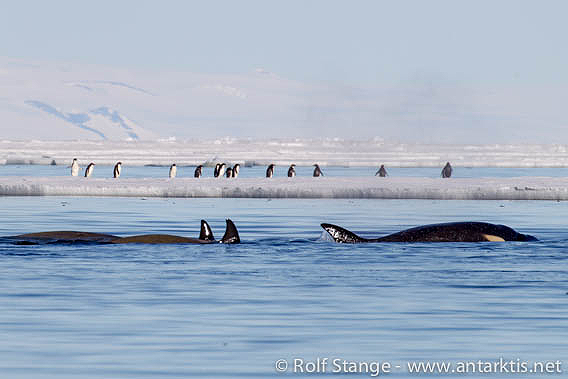
As a contrast, there is plenty of wildlife at the ice edge, where others are cruising with zodiacs, the day is long and leaves time for more than the flight into Taylor Valley. Several pods of Orca are travelling in the channels between the big ice floes, slightly nervously watched by Adelie penguins, who are standing every here and there in small groups. The zodiacs are sometimes in the focus of peaceful attention of these mighty predators. A little walk on one of the ice floes, which measure metres in thickness and are hard as concrete, with Mount Erebus providing a more than appropriate background, rounds the day off.
Cape Royds
Tue
27 Jan
2015
After this great afternoon at Cape Evans, we figured we might as well continue with the momentum we were just in, so on to Cape Royds, just a few miles north of Cape Evans. This is where Shackleton’s Nimrod-expedition was based from 1907 to 1909, not his most famous, but certainly his most successful expedition. And the only one from which he left a hut in Antarctica.
So, as usual we went quickly out just before dinner to have a look at the shore if everything is as it should be for the evening landing – and what do we see, Backdoor Bay is completely filled with ice. Not the good, solid fast ice over which you can just walk, but a wide rim of brash ice, too densely packed by the stiff breeze to drive through by boat, but far too small pieces to walk on. Not very helpful.
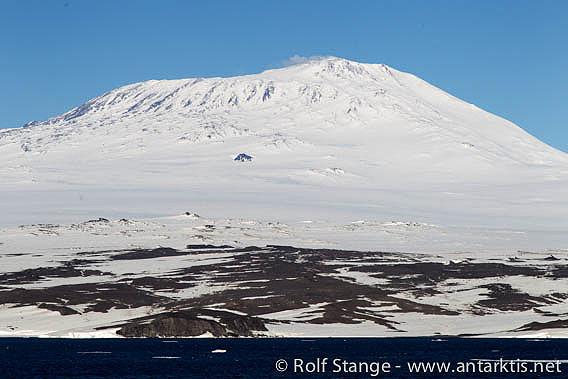
So we do what one should always do and don’t worry about what we can’t do, but rather enjoy the equally recent and pleasant memories from the afternoon at Cape Evans and the views of Mount Erebus in its full splendor, with its famous little steam cloud being ejected from the 3,794 m crater into a clear blue antarctic evening sky.
News-Listing live generated at 2024/April/16 at 20:33:23 Uhr (GMT+1)
